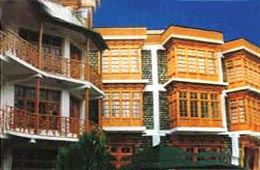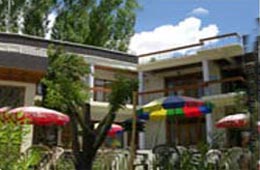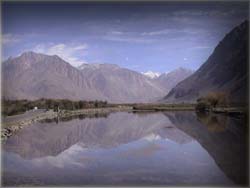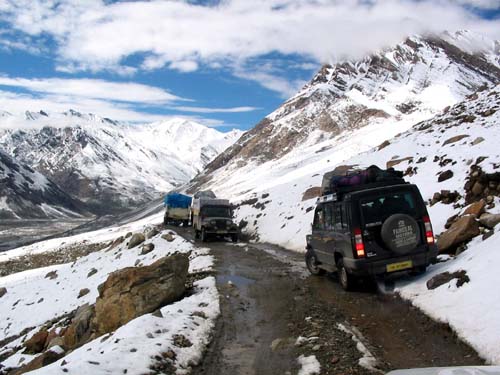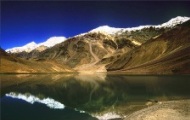How to reach Leh Ladhak
Airline services (Indian Airlines and Jet Airway)operate regular scheduled flights to Leh from Delhi, Chandigarh, Jammu and Srinagar. From Jammu there are two flights in week and from Srinagar one in a week.
The J&K State Road Transport Corporation (J&KSRTC) operates regular Deluxe and Ordinary bus services between Srinagar and Leh on this route with an overnight halt at Kargil. Taxis, cars and jeeps are also available at Srinagar for the journey. Groups can charter deluxe and A-class buses for Leh, Kargil or Padum (Zanskar) from the J and K SRTC at Srinagar. If you decide to drive on this route yourself, you should spare a couple of days around Kargil for acclimatisation.
The second route is the 473-km Manali-Leh road which has been serving as the second land approach to Ladakh. The Manali - Leh road weaves in and out among the mighty snow-clad peaks of the Western Himalayas over a stretch of nearly 485 kms. The road is open from mid-July to mid-October every year, depending on weather conditions.





Ladakh Travel By Air
The J&K State Road Transport Corporation (J&KSRTC) operates regular Deluxe and Ordinary bus services between Srinagar and Leh on this route with an overnight halt at Kargil. Taxis, cars and jeeps are also available at Srinagar for the journey. Groups can charter deluxe and A-class buses for Leh, Kargil or Padum (Zanskar) from the J and K SRTC at Srinagar. If you decide to drive on this route yourself, you should spare a couple of days around Kargil for acclimatisation.
The second route is the 473-km Manali-Leh road which has been serving as the second land approach to Ladakh. The Manali - Leh road weaves in and out among the mighty snow-clad peaks of the Western Himalayas over a stretch of nearly 485 kms. The road is open from mid-July to mid-October every year, depending on weather conditions.
Manali-Leh Route
Rohtang Pass - 51 kms from Manali
Manali is the starting point of this dramatic journey and Rohtang Pass(13,000 ft/3,978 m), 51 kms away is the first important milestone on the Manali - Leh road as it is the gateway to the Lahaul and Spiti valleys.
Keylong - 44km from Rohtang Pass On its way to Keylong- the highest jeepable road and 115 kms from Manali, this important road, which was once part of the ancient trade route between India and Central Asia, wends its way through breathtaking mountain views via the Rohtang Pass, Gramphoo, Kokhsar, Sissu, Gondla, Tandi. One can also reach Kaza, the main town of Lahaul and Spiti
Manali is the starting point of this dramatic journey and Rohtang Pass(13,000 ft/3,978 m), 51 kms away is the first important milestone on the Manali - Leh road as it is the gateway to the Lahaul and Spiti valleys.
Keylong - 44km from Rohtang Pass On its way to Keylong- the highest jeepable road and 115 kms from Manali, this important road, which was once part of the ancient trade route between India and Central Asia, wends its way through breathtaking mountain views via the Rohtang Pass, Gramphoo, Kokhsar, Sissu, Gondla, Tandi. One can also reach Kaza, the main town of Lahaul and Spiti












